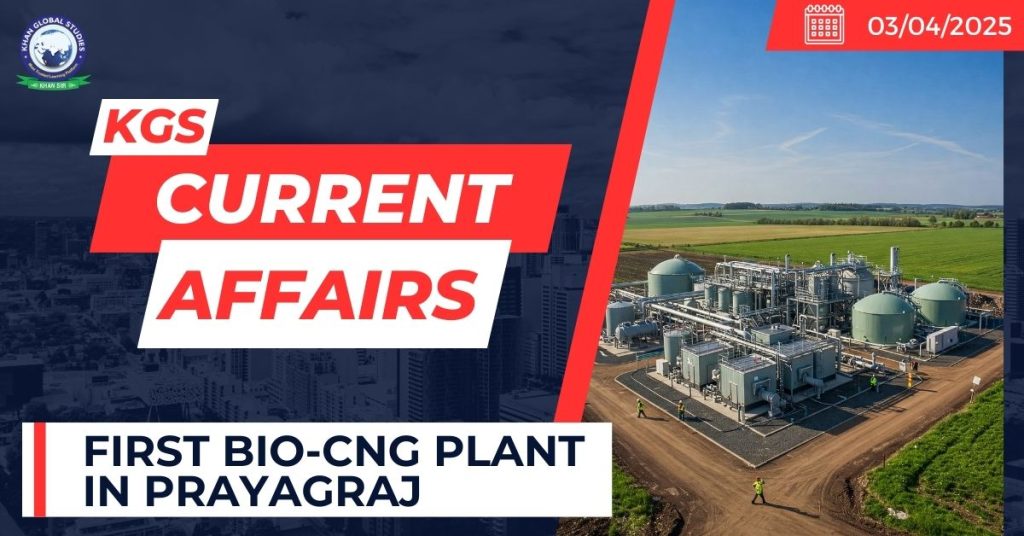Context: Uttar Pradesh’s first waste-to-CNG plant, capable of producing 21 tonnes of biofuel daily, will soon begin operations in the Arail area of Naini, Prayagraj.

- The project is being seen as an exemplary initiative towards renewable energy generation and waste management in the state.
- The plant is being developed on 12 acres of land and is estimated to cost Rs 80 crore.
- The Municipal Corporation has approved the project to be run on a Public-Private Partnership (PPP) model, wherein the corporation will provide 200 tonnes of dung per day to the agency. In return, the agency will pay Rs 55 lakh annually to the Municipal Corporation.
- The plant is first in the state and second in the country after Indore.
- It will produce 21.5 tonnes of bio-CNG, 200 tonnes of organic manure, and 30 metric tonnes of briquettes daily.
- Biofuel will be supplied to households in Naini, with pipeline installation by Adani Gas Limited, which already supplies PNG in several parts of the city.
About Bio-CNG
- Bio-CNG is produced from biogas through desulphurisation, upgradation, and compression.
- Biogas is desulphurised if hydrogen sulfide content exceeds 1,500 ppm, then upgraded to resemble CNG, followed by compression and bottling.
- Bio-CNG contains 92-98% methane and 2-8% carbon dioxide, while biogas contains 55-65% methane and 35-45% carbon dioxide.
- Bio- Gas is purified to remove CO2 and H2S, then compressed into Compressed Bio-Gas (CBG) or Compressed Natural Gas (CNG) as both are compressed methane and have the same calorific value.
- The calorific value of bio-CNG is 52,000 kJ/kg, 167% higher than biogas at 19,500 kJ/kg.
- The high methane content and calorific value, combined with low moisture, hydrogen sulfide, and impurities, make bio-CNG ideal for automobiles and power generation.
- Bio-CNG’s low emission levels make it more environment-friendly than biogas.
Advantages of CNG
- It is environmentally friendly, reducing harmful emissions and protecting the environment from global warming.
- It is cheaper and safer than petrol and diesel, providing significant cost savings with 66% lower operational costs compared to petrol and 28% lower than diesel.
- It enhances engine life by reducing spark plug fouling and avoiding contamination of lubricating oils. It is non-corrosive, non-toxic, non-carcinogenic, and improves public health.
- Its high ignition temperature (540°C) and narrow flammability range (5%-15%) make it safer, as accidental combustion is unlikely.
- It also offers better mileage, is economical, and mixes evenly in the air.
- It reduces pollutants like carbon dioxide and carbon monoxide, making it a greener, more efficient fuel.
| About Bio-Gas It is a renewable fuel that’s produced when organic matter, such as food or animal waste, is broken down by microorganisms in the absence of oxygen. Production Process of Bio-Gas Bio-gas production is an anaerobic process that occurs in two stages: acid formation and methane formation.Acid formation stage: Acid-forming bacteria break down complex organic compounds in waste, producing organic acids.Methane formation stage: Methanogenic bacteria convert organic acids into methane gas. |

